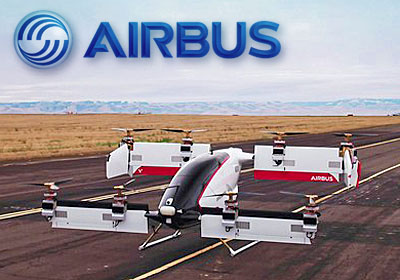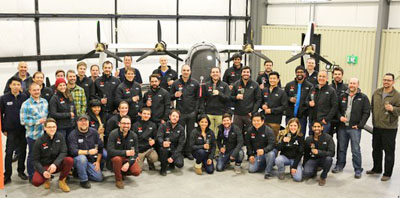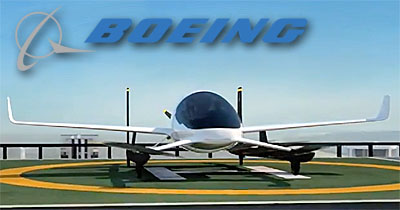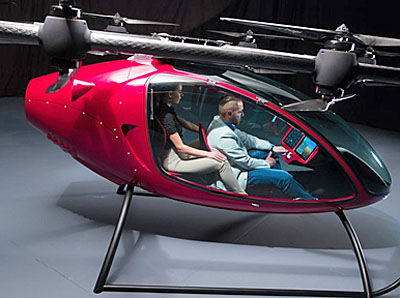While I doubt airliner behemoths Boeing or Airbus are aiming to create aircraft you might buy, their work along with other developers, may nonetheless lead to something new in the future for recreational aircraft pilots and buyers.
 According to a report in Wired magazine, “On the morning of January 31, eight buzzing rotors lifted a black bubble of an aircraft off the ground for the first time … Vahana Alpha One spent 53 seconds aloft, under its own power and autonomous control. It reached a height of 16 feet. The flight may not sound like much, but the team from Airbus … and aerospace experts say such flights of experimental aircraft mark the start of a fundamental change in the way we get around.”
According to a report in Wired magazine, “On the morning of January 31, eight buzzing rotors lifted a black bubble of an aircraft off the ground for the first time … Vahana Alpha One spent 53 seconds aloft, under its own power and autonomous control. It reached a height of 16 feet. The flight may not sound like much, but the team from Airbus … and aerospace experts say such flights of experimental aircraft mark the start of a fundamental change in the way we get around.”
Writer Jack Stewart goes on to state, “Alpha One … is a full-scale demonstrator of a single-person, vertical take-off and landing aircraft. The idea … is to remake the way we fly. Instead of piling dozens or hundreds of people into big jets that fly back and forth between airports, these little VTOL aircraft would work much like personal cars, taking a few people (or just one) on short trips in and around cities.”

Team Vahana poses for a group photo with their creation.
Thirty Vahana engineers, funded by $150 million* from Airbus, worked for two years to make their aircraft ready for its January flight. The Wired article noted, “Now the Vahana team faces a challenge more beguiling than making this funky thing fly: convincing the bureaucrats to let it loose in American skies.”
Meanwhile, in an early pairing with Boeing, ride hailing pioneer Uber reportedly plans to launch air taxi networks in Dubai and Dallas as soon as 2020.
So, What’s This Got to Do with Sport Pilots?
You probably don’t want an air taxi …even if you might take one sometime in the future just as we’ve learned to do with the Ubers and Lyfts of the world. Air taxis, whatever their size, serve a transportation role.

However, does that mean you would not fly a quad- or octocopter, especially if it was mass produced and affordable?
What if this thing could be flown with regular controls like the ultralight, light kit, or LSA you presently love? What if it turned out to be a hoot to fly? What it if had capabilities beyond your fixed wing, gyroplane, trike, or powered parachute. My own radio-controlled drone flies well in wind. Its gyro stabilized camera is amazingly smooth even in gusty conditions …and mine is a antique, a whole two years old.

This “Passenger Drone” looks to be a piloted aircraft with joystick. Would you fly it?
Will the future of recreational flying be transformed the way Vahana developers and Uber envision? A look at electric autos lead by Tesla with its Autopilot capabilities suggest driving in the future may be remarkably different, possibly safer, possibly more eco-friendly, possibly even more fun in ways we cannot currently imagine.
Could tomorrow’s sport aircraft be radical revolutions? Or will this all die down and we’ll just keep flying the aircraft we have today? I’m very certain recreational flying isn’t threatened by these new developments but the aircraft we fly might evolve to become vastly different than what we have at the start of 2018. Stay tuned…!
You can see several more projects in development in this article from New Atlas. It’s full of pictures and promise but only time will tell what will succeed in the marketplace.
* $150 million may rival the investment made by all LSA companies combined.


No-one seems to be concerned with engine failures. A drop from 15′, much more a drop from 100 or 300′ will not end well. And parachutes are not going to work. So just wait until there are some failures and fatalities. It would be nice if someone would come up with a way to make these survivable.
-Christian
HG, UL, FW & helicopter pilot
Multiple motors and redundant programming of controllers will help but you raise valid points about these new aircraft.
The only possible answer: https://www.youtube.com/embed/RnyhkBU1yaw
You’re welcome, Robocop